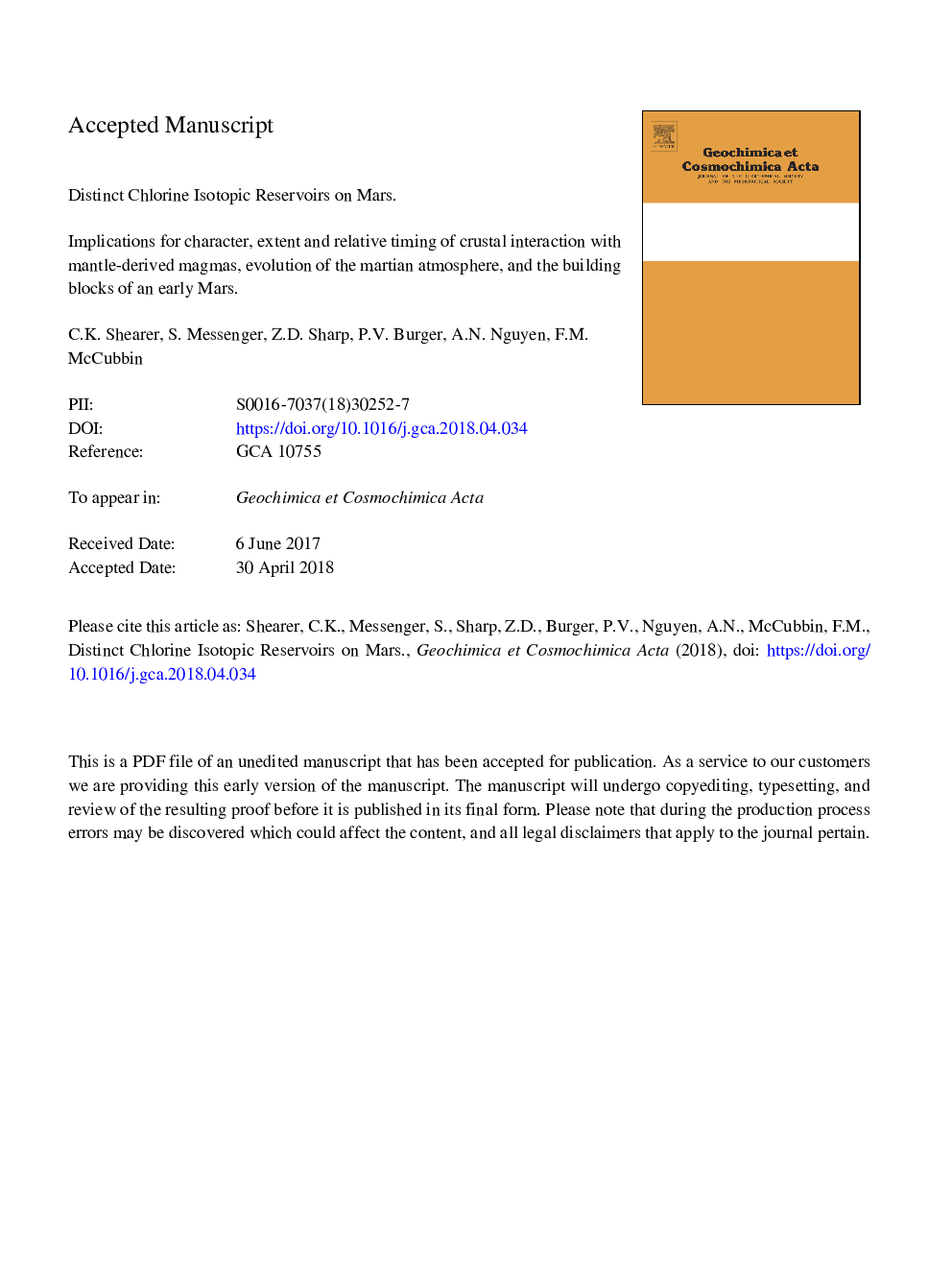| Article ID | Journal | Published Year | Pages | File Type |
|---|---|---|---|---|
| 8910698 | Geochimica et Cosmochimica Acta | 2018 | 42 Pages |
Abstract
The δ37Cl from different generations of apatite in martian meteorite Chassigny has a range of â10â° and is almost as great as measurements made on all martian meteorites (â14â°). This range represents the mixing of distinct Cl isotope reservoirs during the formation of Chassigny: (1) an isotopically light-Cl mantle reservoir (δ37Clâ¯=â¯â4 to â6â°) that exhibits limited variability and (2) an isotopically heavy Cl crustal reservoir (δ37Clâ¯>â¯0) that exhibits significant variability. The mantle component documented in Chassigny melt inclusions that host a solar noble gas composition are derived from pristine, martian mantle. The incompatible element depleted and enriched shergottite sources as defined by radiogenic isotope systematics and trace element concentration ratios have very similar Cl isotopic signatures and suggest that both are derived from the martian mantle. The enrichment of isotopically heavy Cl in the crust resulted from protracted loss of 35Cl to space that started early in the history of Mars. The Cl isotopic signature of the martian mantle is different from the Earth, Moon, and many primitive meteorites (δ37Clâ¯=â¯0), suggesting that these differences represent distinct Cl sources in the solar nebula. The low δ37Cl source represents the primordial Solar System composition from which Mars accreted. The higher δ37Cl values observed for the Earth, Moon, and many chondrites are not primordial, rather they represent the later incorporation of 37Cl-enriched HCl-hydrates into accreting material.
Keywords
Related Topics
Physical Sciences and Engineering
Earth and Planetary Sciences
Geochemistry and Petrology
Authors
C.K. Shearer, S. Messenger, Z.D. Sharp, P.V. Burger, A.N. Nguyen, F.M. McCubbin,
